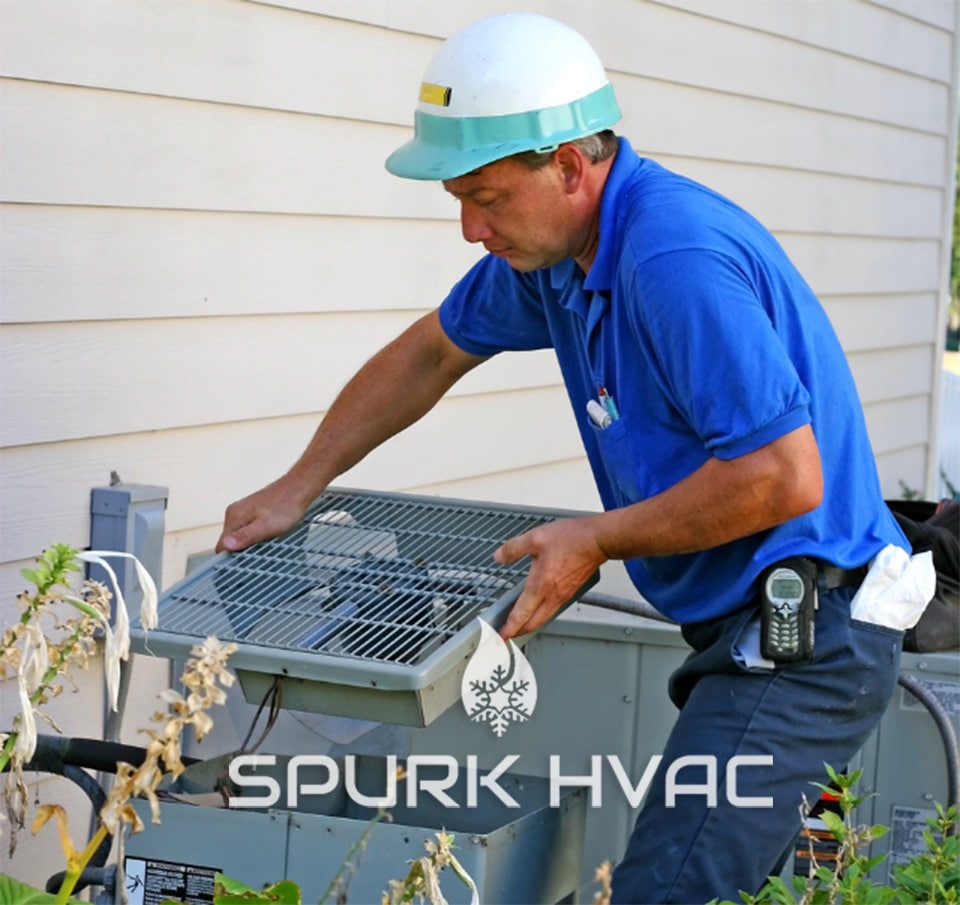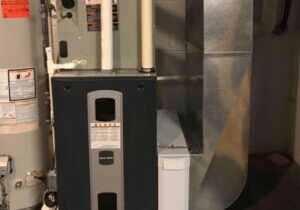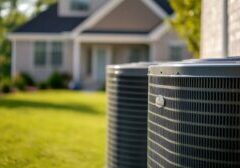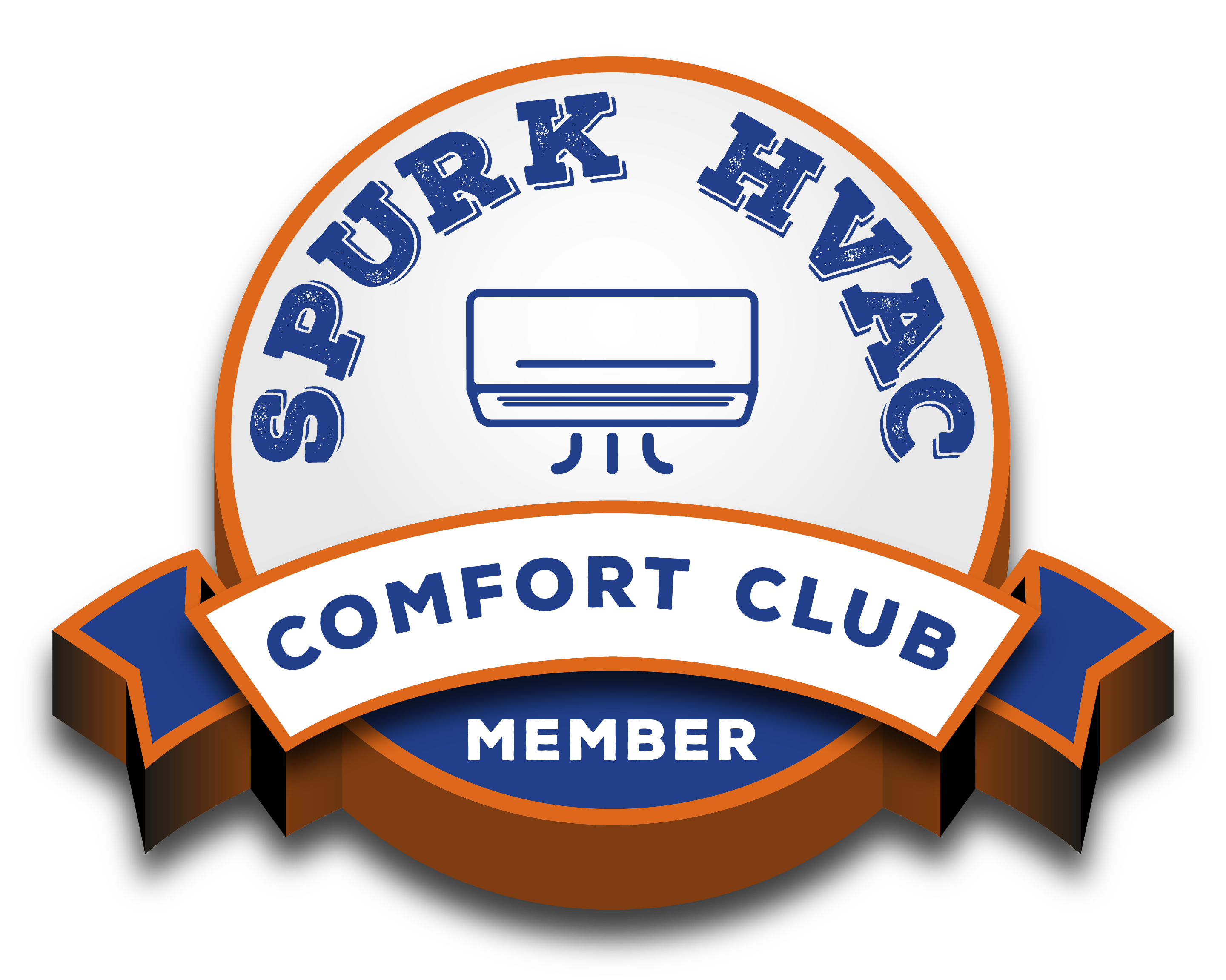Airflow issues are among the most common HVAC problems homeowners experience.
If you suspect you have HVAC airflow problems, you’re probably experiencing one or more of the following:
- Hot and cold spots throughout your space – This is often one of the first signs of HVAC airflow issues.
- Pressure Imbalances – Do you have doors slamming by themselves, strange whistling noises, and drafty areas? These are symptoms of air pressure problems caused by poor airflow from HVAC systems.
- Low air or no air – The problem could be throughout the space, or you could have one AC vent not blowing air in one room.
- Your AC is blowing warm air – Something is wrong.
If you ignore the problem for too long, the strain on your system can lead to a compressor failure. The compressor is like the heart of your air conditioner, and when it goes, there’s a good chance you’ll need a new unit.
The good news is, many of the causes behind HVAC airflow problems are easy and relatively inexpensive to fix.
Read on to learn about the most common causes as well as one easy way to improve AC airflow once and for all.
1. OBSTRUCTED CONDENSER UNIT
Here’s a common HVAC airflow problem and one you can fix yourself!
Air-cooled air conditioning systems have what’s called a condensing unit, typically located outside or in a mechanical room. Outdoor units especially can become obstructed due to leaves and debris that have accumulated around the unit. Even systems in mechanical rooms can be obstructed by other equipment or storage items. Your system can overheat when there’s not enough airflow to the air conditioning unit.
Your first step to improving HVAC airflow should be to clear the area around your condensing unit.
2. BLOCKED VENTS AND REGISTERS
One bit of advice we can offer for how to increase airflow through vents is to make sure all vents and registers are open and not blocked by furniture.
This issue is quite common in an office setting, especially when people don’t agree with the thermostat setting! You’ve seen it: a filing cabinet gets moved in front of the AC register because someone is too cold. The next thing you know, your HVAC airflow has been compromised.
3. CLOGGED FILTERS
When was the last time you changed your air conditioner’s filter?
That filter has an important job: to remove dust and debris from the air and keep it out of your equipment and your ducts. If the filter gets overloaded and clogged, it impedes your HVAC airflow, leading to those hot & cold spots and stuffy air. Debris in the equipment can damage parts as well.
Be sure to change your AC filter according to the manufacturer’s instructions and your system usage. That could mean as frequently as once a month.
4. BLOCKED OR LEAKY DUCTS
What happens to all the dust that gets past your clogged AC filters? It winds up accumulating in the ductwork.
A buildup of dust can be compounded by ductwork that’s too small for the capacity of your air conditioner. Ducts that are already too narrow can become easily clogged.
Especially if you’re in an older building, it’s also not unheard of for rodents, birds, or insects to build nests in HVAC ducts.
The walls of the ductwork can also develop holes or cracks where air leaks out. All of these ductwork issues lead to reduced airflow for heating and air conditioning.
5. THERMOSTAT ISSUES
Sometimes, something as simple as a faulty thermostat, or even a low battery can be the cause of HVAC airflow problems.
6. SLUGGISH FAN
Your HVAC system has blower fans that move the air through your ducts and throughout your space. If a blower motor is sluggish, that can impede HVAC airflow and cause the symptoms mentioned earlier.
In some cases (especially in a restaurant) the fan itself can become coated with grime which slows the operation and reduces airflow. Luckily it’s a simple matter to clean the fan.
7. DIRTY COILS
Your air conditioner’s condenser coil is another part with an important job to do: release the heat that’s removed from your space.
Since it’s part of the outdoor unit and exposed to the elements, the coil can get so dirty that it can’t release heat. Then your unit has to work harder (and hotter) trying to cool your space. The result can be those HVAC airflow issues. That’s one reason you should not neglect to have your coils cleaned regularly (usually once or twice a year).
8. LOW REFRIGERANT LEVELS
This is one of the most common problems with HVAC systems, especially older ones that have not been well maintained. If your air conditioner is leaking refrigerant, you’ll notice airflow issues as well as reduced cooling. Typically slow leaks cause a gradual decline in system performance. Your HVAC technician can test for leaks and repair them to get things back up to speed.
9. OVERSIZED AC UNIT
This is a more common problem than you might imagine. Years ago, the thinking was “bigger is better” when it comes to HVAC sizing. Today we know that units with a capacity too large for the space run inefficiently, cycling on and off too frequently. That means they never run long enough to remove humidity from the space, making it feel stuffy and uncomfortable.
If you’ve noticed these symptoms, have your unit checked by an HVAC design expert.
10. OUTDATED HVAC DESIGN
Speaking of HVAC design, have you renovated or rearranged your space without updating your HVAC system? If so, the layout or sizing of the ductwork (or possibly the equipment itself) may no longer be able to properly cool the redesigned space.
This is another good reason to consult an HVAC design expert: you may find that simple ductwork changes can make a huge difference in your HVAC airflow and comfort.
One simple way to improve HVAC airflow
Although HVAC airflow problems have many causes, you can mitigate almost all of them with regular HVAC preventative maintenance.
Here are some of the tasks your Spurk HVAC technician can take care of to improve the HVAC airflow in your space:
- Perform HVAC airflow measurement and testing to determine the severity of the problem
- Clean or replace air filters
- Clean fan blades
- Inspect & adjust motors
- Inspect your ductwork for blockages or leaks
- Clean coils
- Inspect your HVAC design and recommend modifications
The bottom line is, if you have some of those aforementioned symptoms of HVAC airflow problems, get your system maintained NOW before you experience that last symptom–system failure.
Book Your Service Now!
ABOUT SPURK HVAC
Spurk HVAC was formed in 2018 and is located in Warrendale, Pennsylvania. We proudly serve Cranberry Twp., Wexford, Gibsonia, Mars, and the surrounding Greater Pittsburgh area.
We service all makes and models. If you are seeking a heating repair, heating system replacement, air conditioner repair, air conditioning maintenance, air conditioning replacement, or any other heating & cooling services. Whether you are looking for residential or commercial HVAC services, we look forward to any and all opportunities to become your preferred HVAC contractor.








One thought on “Top 10 Causes of HVAC Airflow Issues”
Comments are closed.